
STUDIO APPARATUS
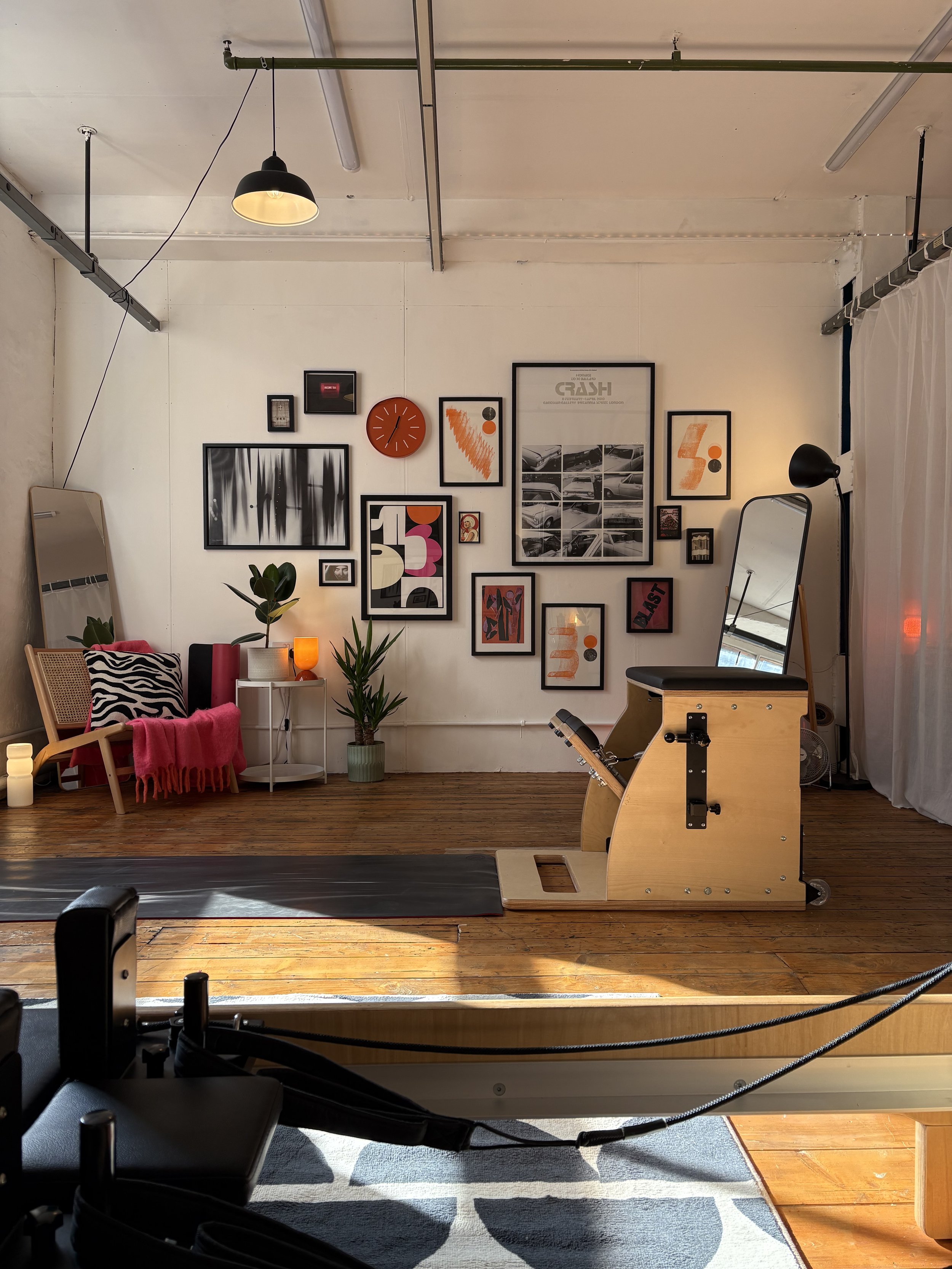
Reformer, Tower & WUNDA CHAIR
Private Reformer, Tower & Wunda Chair sessions are currently available for a discounted price of £30 until May 2025.*
New client offer: first two sessions £50.
Four-class block: £110.
Apparatus privates generally involve working across a few pieces of equipment in a single session, with exercises selected according to the client’s unique needs and aims. However, clients can also request to focus on a specific apparatus, for example the Reformer, if they prefer.
Scroll down to learn more about the apparatus in my studio.
* Having completed the BASI Comprehensive training program in September 2024, passed two written exams and fulfilled the requisite 500 hours of teaching, practice and observation, I’m now working towards the final set of practical exams. Once comprehensively certified, rates will increase.
Please note: this is an additional qualification, having already certified through BASI as a mat Pilates teacher early 2024. I’m fully insured to teach on all Pilates apparatus, and I am a First Aid certificate holder.
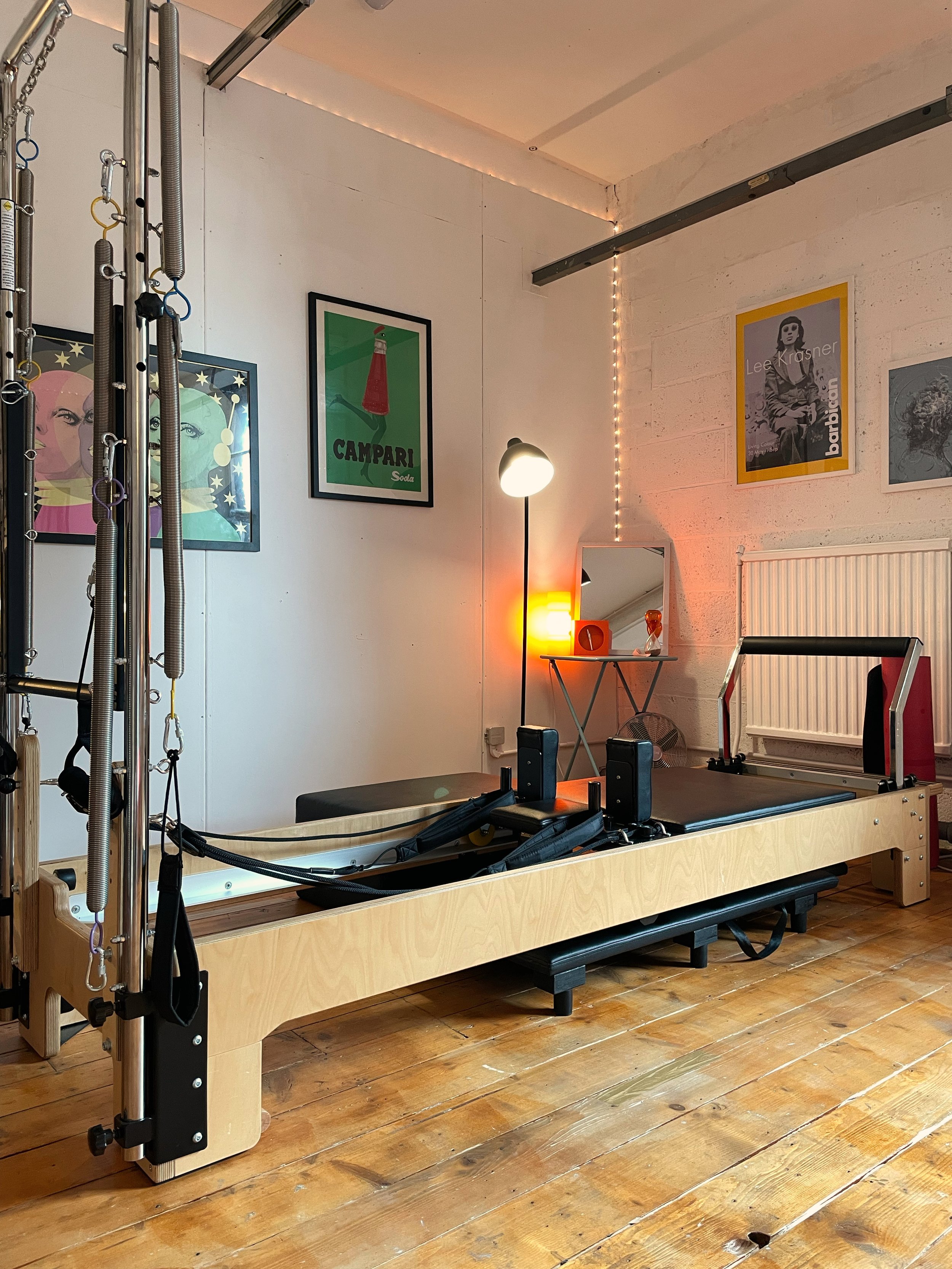

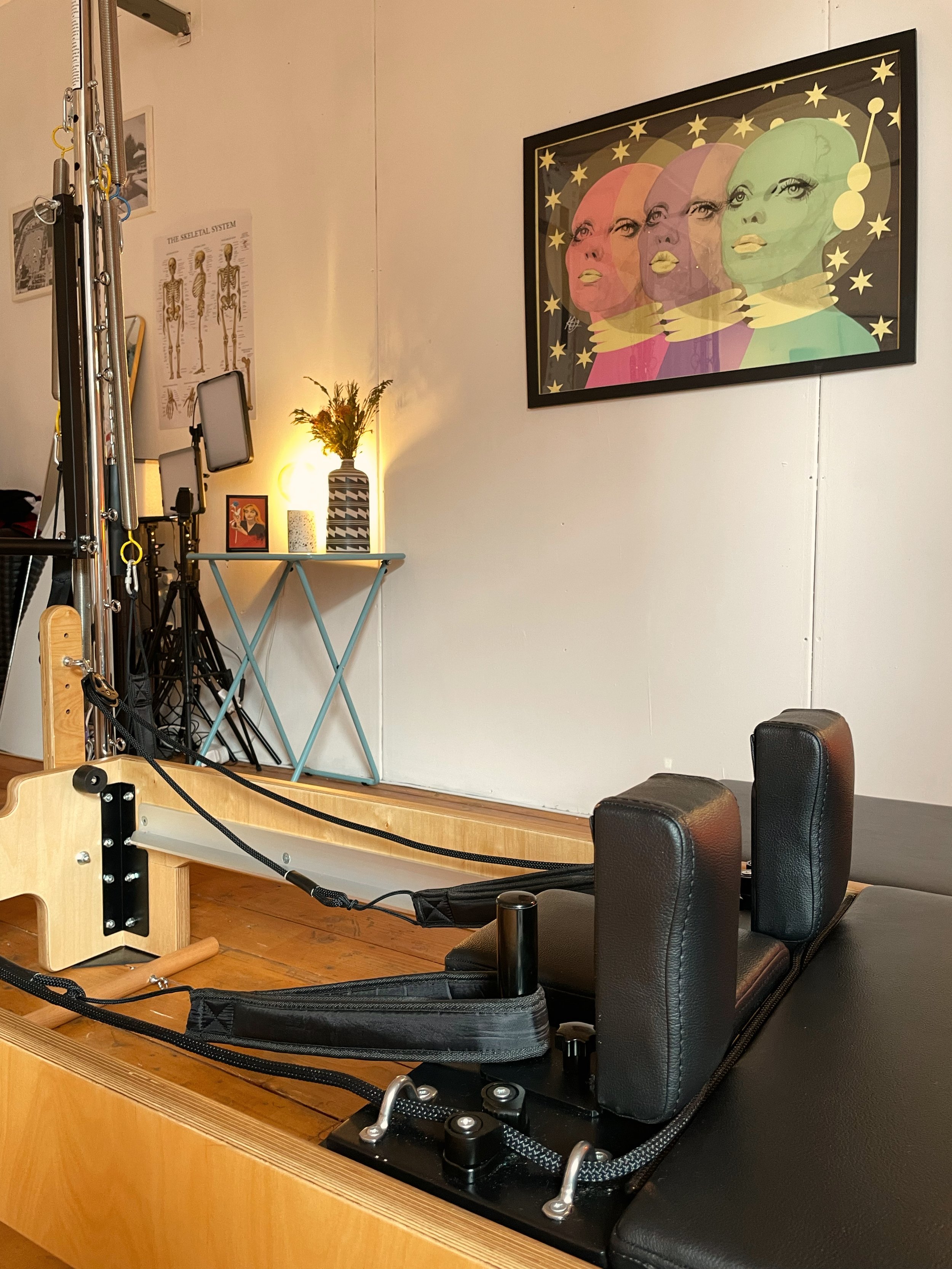
THE REFORMER
The Reformer (originally patented as the Universal Reformer by Joseph Pilates) is, put simply, a frame with a carriage set on wheels, plus springs, straps, pulleys, shoulder rests, and a footbar. Depending on how you use it, the Reformer provides support, creates resistance, challenges stability and stretches muscles deeply. In doing so, it helps you to strengthen and mobilise your whole body, control your muscles with micro-level focus, develop proprioceptive skills, and create balance.
Classical reformers have only four heavy springs. Contemporary reformers vary according to the brand, but generally have three heavy springs, one light (half) spring and one extra light (quarter) spring. In the case of mine, which you can see below, the three red springs are heavy, the blue is light, and the yellow is extra light.
A heavy spring on a Pilates reformer generally has an initial tension of around 3kg (the actual figure depends on the size and weight of the user), reaching around 30kg when pushed to full extension. That said, some of the most advanced work on the Reformer is actually performed on the lightest possible spring settings, which requires the muscles to work much, much harder to stabilise. Heavier doesn’t mean harder; in fact, it can often make work a lot easier!
The Reformer appears intimidating, but it’s brilliant for beginners as it provides far more support than work on the mat (which people often incorrectly assume is ‘beginner level’). Equally, as you advance through the practice it can provide some of the most challenging work going. It’s super, super versatile.
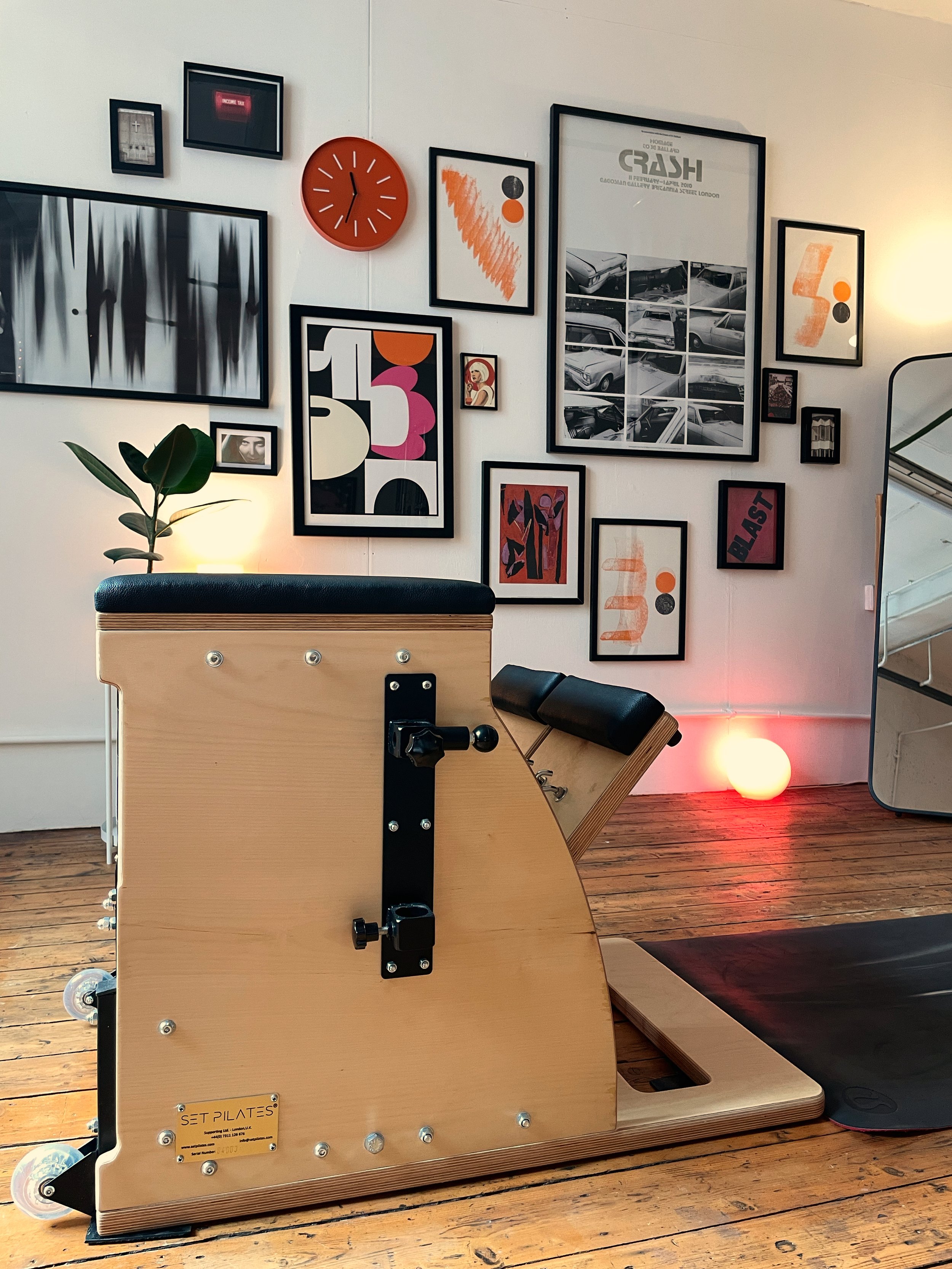
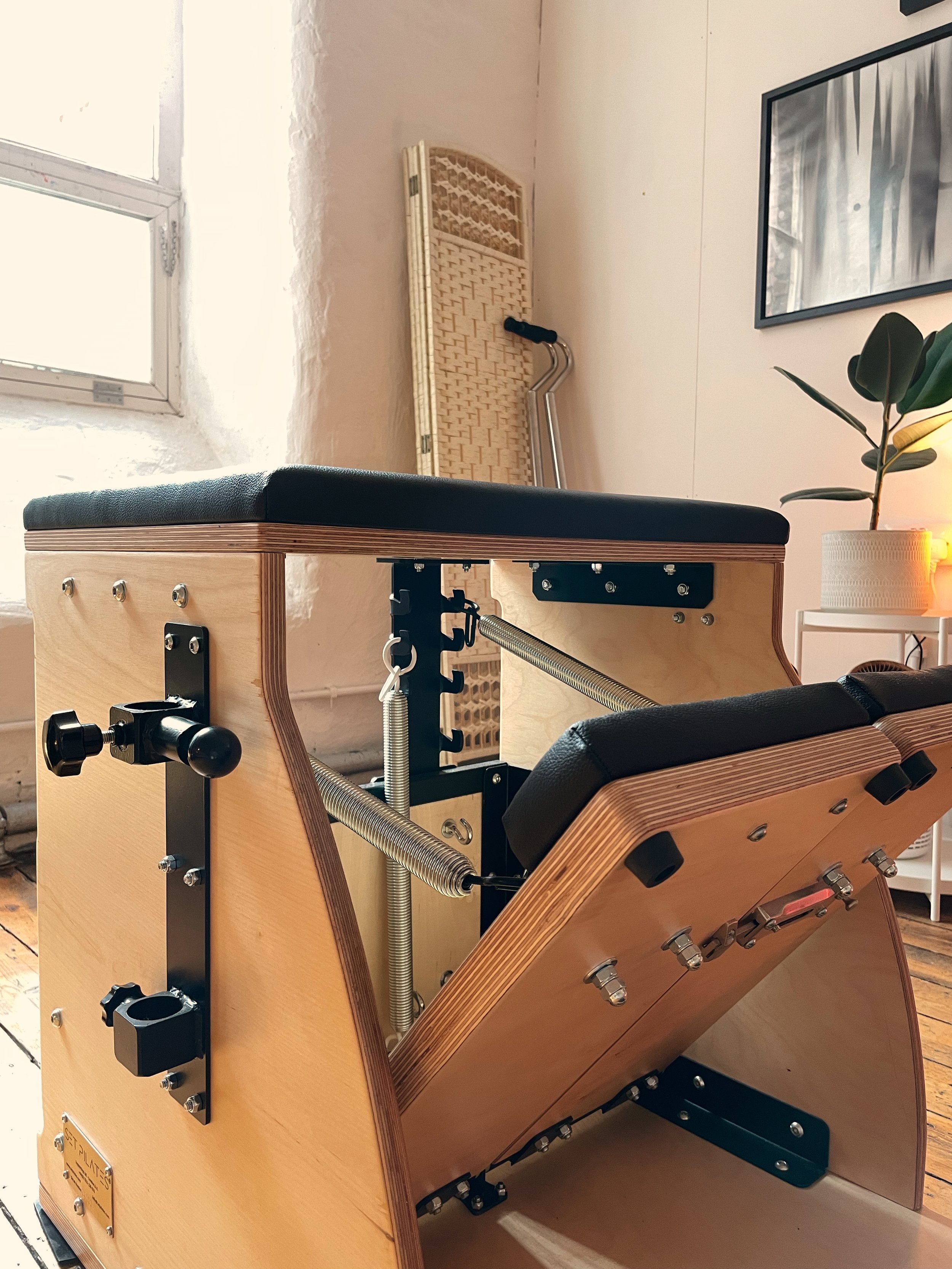

THE WUNDA CHAIR
Also known as a Stability Chair or Combo Chair, the Wunda Chair is essentially a backless chair with a padded seat on top, and a foot pedal attached to springs. It was originally designed by Joseph Pilates to be an armchair that clients could have in their own homes, which could be flipped over and turned into a piece of apparatus at will! There are detachable handles for standing work, and the pedal can often (but not always) be split into two pedals that move independently. One of the most underrated pieces of apparatus in the Pilates system, the Wunda Chair is small in size but packs a serious punch.
The main challenge of the Wunda Chair comes from the fact that only a small part of the body is connected to the Chair at any time, which means you have to work far harder to stabilise and balance. The springs are very heavy, and the exercises are often performed in a surprisingly small range that requires deep, deep focus throughout the whole body. Even something like footwork is a whole body exercise on the Chair: you’ll feel it as strongly in your abdominals as your legs. The chair is humbling. It shows you in plain sight all of your imbalances and weaknesses. There’s nowhere to hide! It’s brilliantly evil.
That said, while the Chair is undeniably tough work, it’s also highly adaptable. It can be used to brilliant effect for rehabilitative work, and is also fantastic for pregnant clients who cannot lie in a supine position (on their backs). On the other end of the scale, it’s ideal for athletes and clients who are keen for heavy but precise strengthening work.
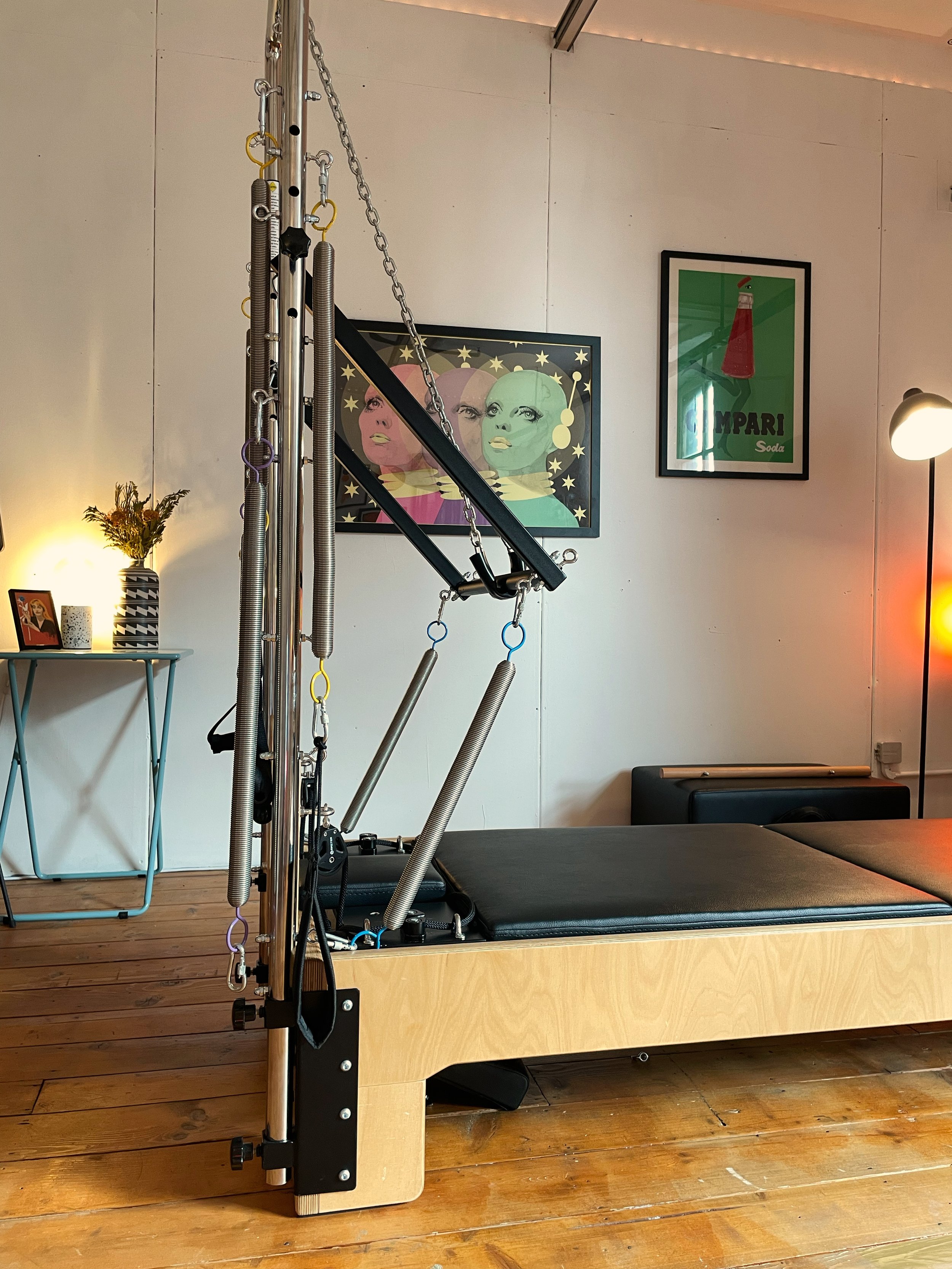

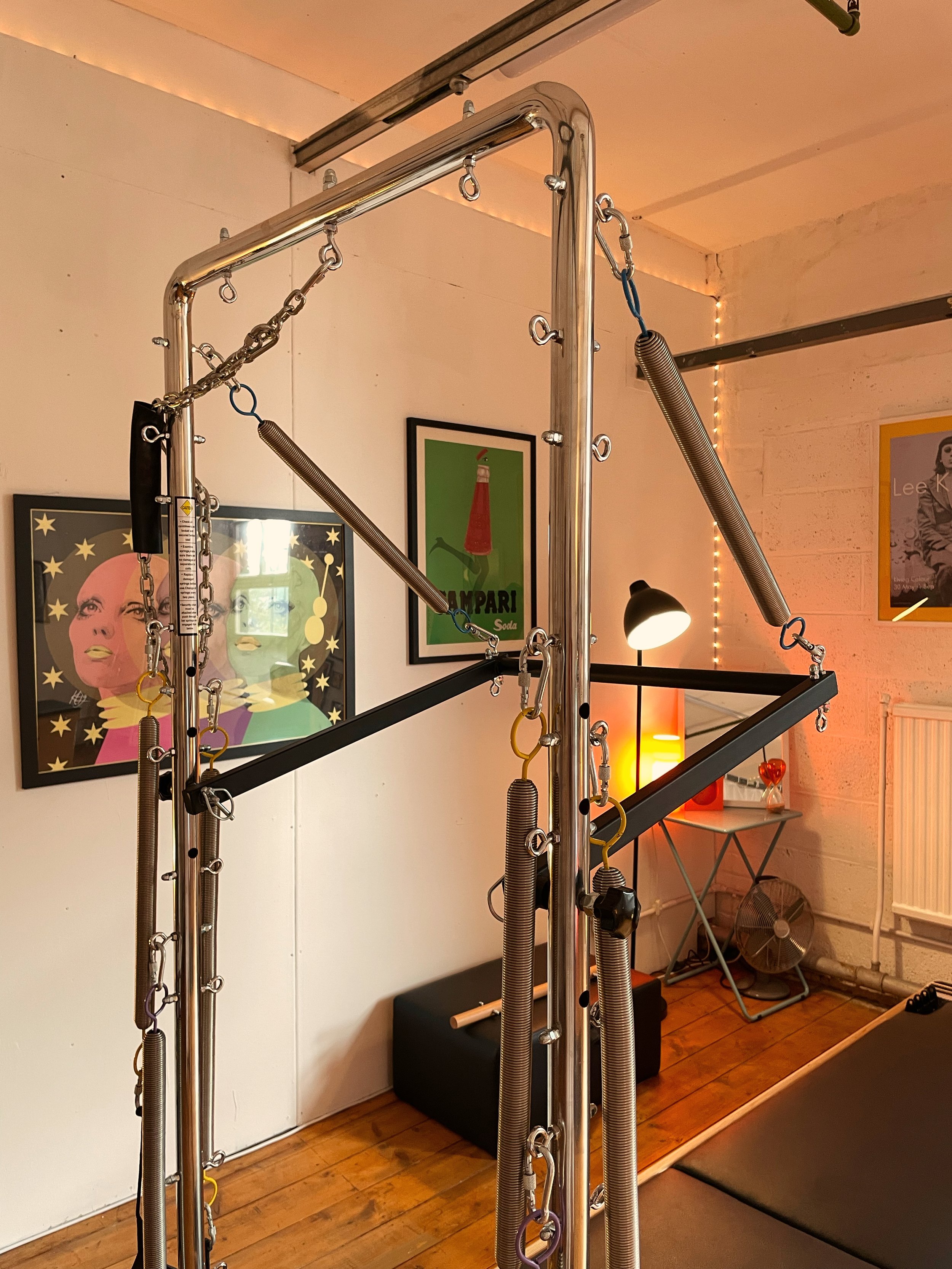
THE TOWER
The Tower is half a Cadillac, which is also sometimes referred to as a Trapeze Table, but it has everything located at one end of the apparatus rather than set around a four poster frame (here’s a visual of the Cadillac for reference.) It is a raised mat bed with an upright frame at one end, which has various springs and bars attached to it, plus foot straps and handles. You can work from the mat, or perform standing work around the other side. The springs are strong! You can do everything from the Cadillac repertoire on here apart from the hanging work.
It’s an incredibly versatile piece of equipment; springs can be attached at various heights and positions to create totally different outcomes. Think of it like mat pilates, for the most part, but with extra added resistance and feedback. The springs are brilliant for developing core strength: even dedicated arm and leg exercises require serious control through the centre. It requires you to focus deeply, as things can get very wobbly otherwise.
Work on the Tower can be very challenging, however there’s also plenty of work that leans more towards the rehabilitative side. I like to use it with clients who arrive at the studio feeling stiff, achey and tired: it works wonders for mobilising the spine, creating a sense of length and opening throughout the body. I particularly love giving Cat Stretch Kneeling on the Tower (essentially a Roll Down with resistance, which feels incredible through the back) as a treat when they’re not feeling 100%.
As you’ll see in the photos, I have a combo Reformer/Tower unit that can be switched up by adding/removing the Tower converter mat and removing the shoulder rests.